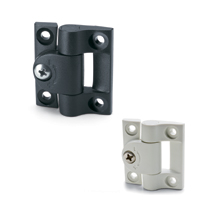
Friction hinges offer a unique alternative to traditional hinges. They still consist of mechanical bearings, and they are still used to provide a limited angle of rotation between two objects. Only friction hinges, however, leverage friction to create resistance against their pivoting motion. When opening a door or lid to which a set of friction hinges are attached, you’ll feel resistance. Here are five facts about friction hinges and how they work.
#1) Designed to Hold Open Doors, Lids and Other Objects
Friction hinges are designed to hold open doors, lids and other objects. When you pull open a door or lid, for instance, the friction hinges will create friction to resist the closing motion. Traditional hinges don’t offer this same resistance. Most traditional hinges will pivot freely without friction or resistance.
#2) Available in Soft-Close Styles
You can find friction hinges in soft-close styles. The term “soft close” refers to a type of hinge that allows for a gentler, softer closing action than that of a traditional hinge. Soft-close hinges are commonly used with doors. They typically leverage hydraulics to minimize and suppress the closing force. Soft-close friction hinges will prevent doors and other objects from slamming shut — something that could otherwise cause damage.
#3) Available With Adjustable Friction Levels
There are friction hinges available with adjustable friction levels. Known as adjustable friction levels, they offer a superior level of customization. Adjustable friction hinges are made of high-impact technopolymer., and they are coated with a chemical- and moisture-resistant finish. As their name suggests, you can adjust their friction levels. There’s a screw in the center of adjustable friction hinges that, when turned, will increase or decrease their friction levels depending on the direction in which you turn it.
#4) Used in a Variety of Applications
When most people think of hinges, they envision doors. After all, most doors feature a set of hinges. Some of them use traditional hinges, whereas other doors use friction hinges. But friction hinges aren’t limited to doors. They are used in many other applications.
Common applications for friction hinges include the following:
- Laptop lids
- Toolboxes
- Furniture
- Automotive sun visors
- Folding tables and desks
- Restaurant grill lids
- Medical devices
#5) Promotes Ergonomics
Friction hinges are ergonomic. They protect workers and other individuals from unnecessary stress while making it easier for them to open and use the objects to which the friction hinges are connected. Friction hinges can hold open doors and lids, for instance, so that you won’t have to manually hold the object open.
